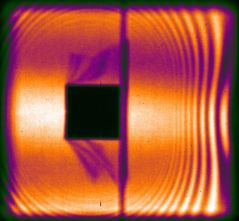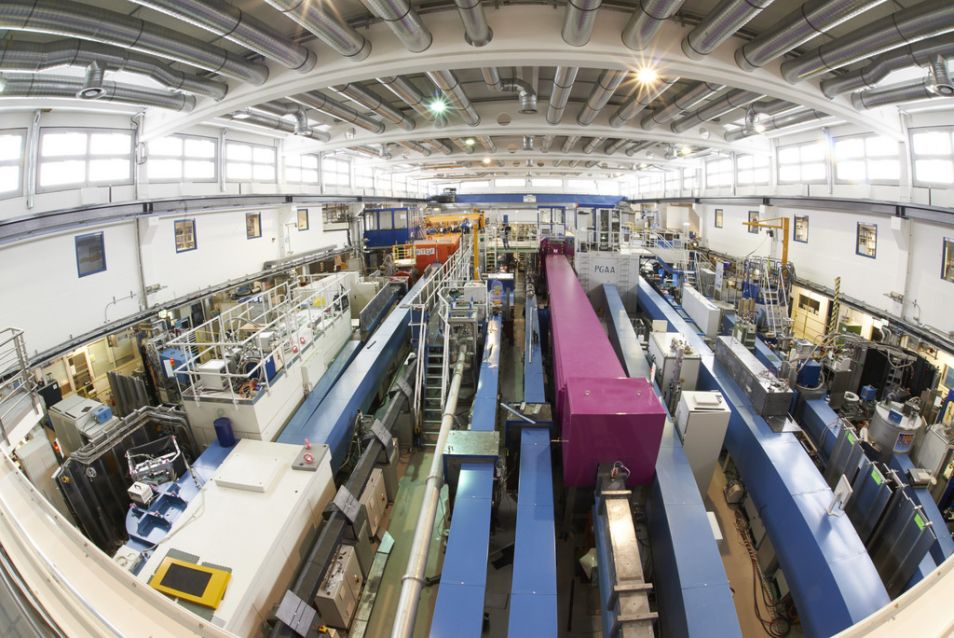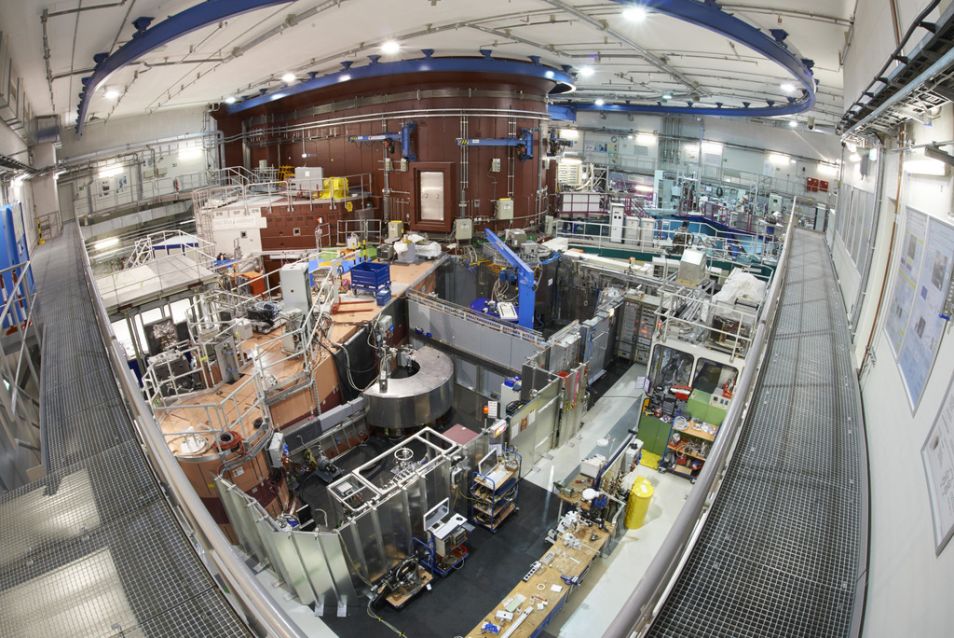MLZ is a cooperation between:
 > Technische Universität München
> Technische Universität München > Helmholtz-Zentrum Hereon
> Helmholtz-Zentrum Hereon
 > Forschungszentrum Jülich
> Forschungszentrum Jülich
MLZ is a member of:
 > LENS
> LENS > ERF-AISBL
> ERF-AISBL
MLZ on social media:

MLZ (eng)
Lichtenbergstr.1
85748 Garching
Scattering Methods

Different length and time scales, that can be measured with the various instruments (Picture: Karin Griewatsch, Kiel University, KFN).
When a neutron collides with a sample, one of the following processes will occur:
- Scattering (neutron changes its flight direction and possibly its energy/ velocity)
- Absorption (neutron is absorbed by the sample)
- Transmission (neutron passes through the sample)
The different interaction processes are utilized for various non-destructive analytical techniques. Diverse instruments are used to measure structures of different size and length scales, as well as motions or processes at different time scales (see figure above).
Elastic Scattering
When neutrons are scattered by nuclei or magnetic moments in samples without a change in the neutron’s energy, the scattering process is said to be elastic. Diffractometers and elastic scattering instruments deliver structural information, such as atomic positions, lattice matrix and symmetry, a possible magnetic order or information on large structures. Instruments for this purpose are:
- Single-crystal diffractometer (BIODIFF, HEiDi, MIRA, POLI)
- Powder diffractometer (SPODI, ERWIN, POWTEX)
- Materials science diffractometer (STRESS-SPEC)
- Large-scale structure diffractometer (KWS-1, KWS-2, KWS-3, SANS-1)
- Reflectometers (MARIA, NREX, REFSANS)
Inelastic Scattering
When a neutron exchanges energy with a nucleus in the sample, the scattering process is said to be inelastic. Instruments which probe the properties of the sample as a function of the neutron energy are in general called spectrometers. These inelastic scattering instruments are able to give us information on a particle’s motion in space and time as well as magnetic order within a sample. Typical examples are:
- Three axes spectrometers (MIRA, PANDA, PUMA, TRISP, KOMPASS)
- Time-of-flight spectrometers (DNS, TOFTOF, TOPAS)
- Backscattering spectrometers (SPHERES)
- Spin-echo spectrometers (J-NSE, MIRA, RESEDA, TRISP)
Imaging and Analysis

Polarized radiograph of the magnetic stray field around a permanent magnet (Picture: ANTARES, FRM II).
The imaging technique detects all the neutrons that are transmitted through a sample, i.e. all neutrons that are not removed from the beam by absorption or scattering processes. Two-dimensional (radiography) or three-dimensional (tomography) images of manifold types of objects can be obtained, delivering information on internal structures.
- Radiography and tomography facilities (ANTARES, NECTAR)
Prompt Gamma Activation Analysis (PGAA) and Neutron Activation Analysis (NAA) are nuclear analytical techniques. After the capture of a neutron by the atomic nucleus in a sample, prompt or delayed gamma rays with an isotope specific energy are emitted. Their detection can be used for non-destructive, highly sensitive isotope analysis of a large variety of materials.
- Neutron Activation Analysis (NAA) / Prompt Gamma-Ray Activation Analysis (PGAA)
Nuclear and Particle Physics
Experiments in the field of nuclear and particle physics reveal information about the fundamental interactions of particles as well as their underlying symmetries.
Experiments where the neutron is the investigation object itself delivers more precise information on the neutron’s weight, lifetime, gravitational mass and dipole moment.
The precise knowledge of these fundamental quantities is essential to test and improve theories in physics.
- Nuclear and particle physics (MEPHISTO, UCN, EDM,…)
Positron techniques

The positron technique is based on the fact, that after implantation in matter, positrons annihilate with an electron either directly after a short time or after being trapped in crystal defects or at the surface with the release of γ-radiation. This method is used for studies in solid state and surface physics as well as for fundamental research in nuclear and particle physics.
- Positron beam facility (NEPOMUC)
MLZ is a cooperation between:
 > Technische Universität München
> Technische Universität München > Helmholtz-Zentrum Hereon
> Helmholtz-Zentrum Hereon
 > Forschungszentrum Jülich
> Forschungszentrum Jülich
MLZ is a member of:
 > LENS
> LENS > ERF-AISBL
> ERF-AISBL
MLZ on social media:




